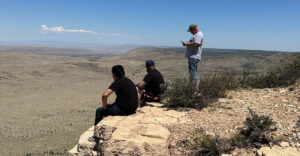Yerba Buena: A Native Healing Tea Steeped in History
Using the roots, seeds, and leaves of native flora is prominent in local folk medicine.
Using the roots, seeds, and leaves of native flora is prominent in local folk medicine. Folk medicine mixes traditional healing practices and beliefs that involve herbal medicine, spirituality, and manual therapies or exercises in order to diagnose, treat, or prevent an ailment or illness.[1]
Yerba buena translates to “the good herb” and can vary among cultures. Here in New Mexico, Yerba buena (clinopodium douglasii) is a plant of the mint family and also includes a wonderful variety of other herbs and spices like sage, rosemary, and thyme. Yerba buena has fragrant green leaves and white flowers that bloom from spring to summer. The delicate leaves can be harvested, dried, and used to make a natural healing tea.
Although we all benefit from modern medicine, there are some natural healing methods we can adopt from our ancestors. Growing up, a cup of yerba buena and grandma’s “sana, sana, colita de rana” would cure just about anything. Whether it was a headache or an upset stomach, the warm concoction would soothe the symptoms.

To Make Yerba Buena
- Bring 4 cups water to a boil and add about 3-4 tablespoons of dried yerba buena leaves. Reduce heat and simmer for 5-8 minutes with a lid on the pot.
- Add 2 cups of ice and bring the tea back to a low boil for 3-5 minutes.
- Cool, strain, and refrigerate to serve cold. Can also be served hot or with honey!
Reference: 1. National Center for Farmworker Health, Folk Medicine and Traditional Healing. November 2018.
Available online: www.ncfh.org/folk-medicine.html












